Sansevieria cylindrica (African Spear Plant) Profile
Written by Iris
Sep 23 2021
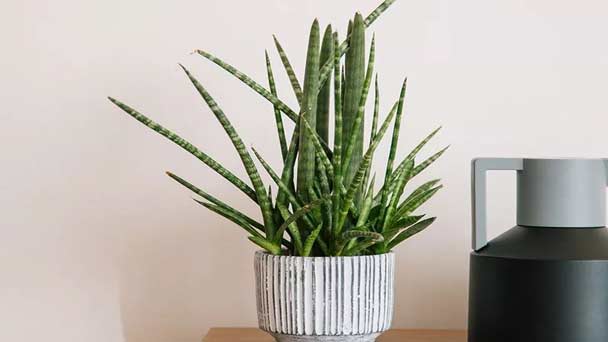
Sansevieria cylindrica, also known asAfrican Spear Plant, is a succulent plant found naturally in southern Africa. Sansevieria cylindrica is praised for its cold tolerance, low light requirements, and ease of care, and Sansevieria shaped ica was no exception. Combining its decorative spiky appearance makes African Spear Plant a great choice for beginners and more experienced houseplant feeders.
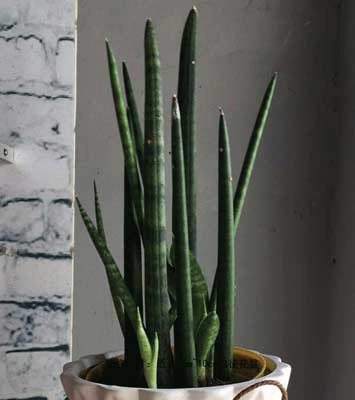
Sansevieria Cylindrica is a succulent plant that has dark green-gray and smooth subcylindrical leaves. Each leaf can reach up to 7 feet (2.1 meters) in height and 1.2 inches (3 cm) in diameter.
It is considered to be a slow-growing succulent, forming a few rosettes from underground rhizomes with at least 3 leaves each.
This species has a unique place among the other Sansevieria plants that have strap-shaped leaves. It is said that the subcylindrical characteristic feature specific to its leaves is caused by a failure in expressing genes.
These plants got the “spear” name due to the tips of their leaves that are protected by a tough and sharp point. Be careful not to break the spear because it may end the growth for it.
A mature, healthy plant will bloom sporadically, producing an up to 3 feet (90 cm) spike-like of cream-white flowers. While these are not showy and impressive, their fragrance is very pleasing.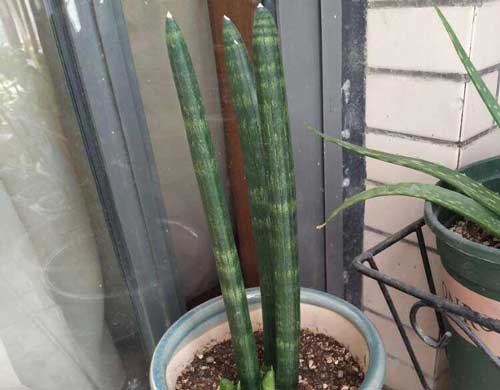
You also want to keep taps with these other handy propagation tips:
Use a sterilized pair of scissors to dissect a few healthy leaves from the mother plant.
The open wounds need to heal and form a callus that protects the newly propagated cuttings from catching diseases, so it’s essential to place them out in the sun for a couple of days.
Place the base part of the cuttings in a jar full of water and wait for the baby roots to develop.
You can also propagate the cuttings using soil. Just remember to follow the tips right under the soil and transplanting section while preparing the potting mix.
If you're looking to propagate them using water, transfer the cuttings in a growing medium once the pups begin to emerge.
Sansevieria cylindrica (African Spear Plant) is happy in places with temperatures between 15°C and 23°C and as low as 10°C for short periods. Sansevieria cylindrica (African Spear Plant) will do fine in normal household humidity.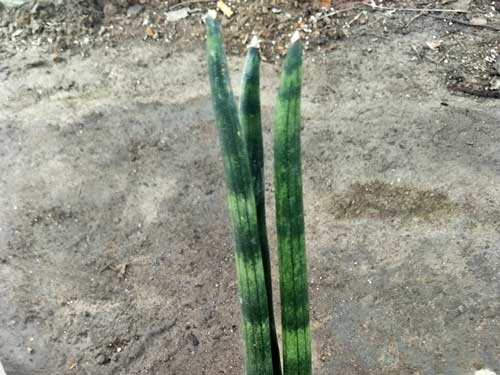
And that literary means there's a constant supply of fresh air. It's no wonder why this biological property has over the years been used to treat Sick Building Syndrome. Clean air also helps get rid of foul odor in your house. While grooming your african spear plant, you’ll need to get rid of the dry and wilted leaves. Many adept gardeners, however, don't throw them away. Instead, they use the dry leaves as a source of fiber which is used to make ropes and craft jewelry.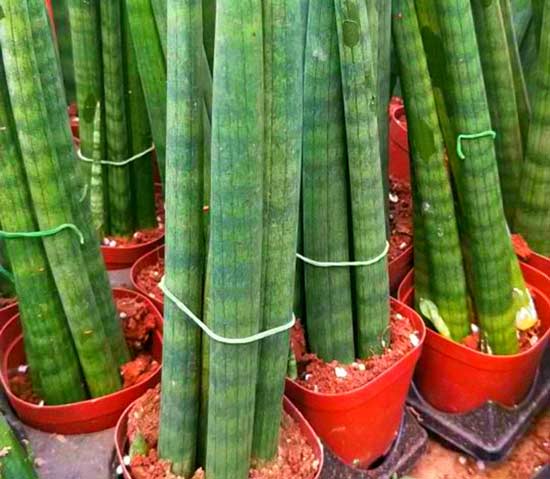
Sansevieria trifasciata ‘Golden Hanhii’: The Golden Hanhii is also popularly known as the Bird’s Nest. This variety is a petite succulent with light green stripes that run horizontally on the leaves which form a striking rosette pattern as they grow older.
Sansevieria trifasciata ‘Cleopatra’: This cultivar is one of the best options for indoor spaces such as your office, room, or balcony. While it’s hard to find this variety in the market, it’s one kind of an unfussy houseplant that grows at a slow pace but forms a striking rosette pattern if grown under the right conditions.
Sansevieria trifasciata ‘Black Gold’: The leaves of this popular perennial have golden-yellow stripes on the edges and grow sleekly tall to make the plant look winsome in any indoor setting.
Sansevieria trifasciata ‘Futura Robusta’: This is a distinct type of mothers-in-law's tongue with leaves that have sleek stripes with an irregular shape. It grows compactly inside a small container and makes a delightful indoor accent.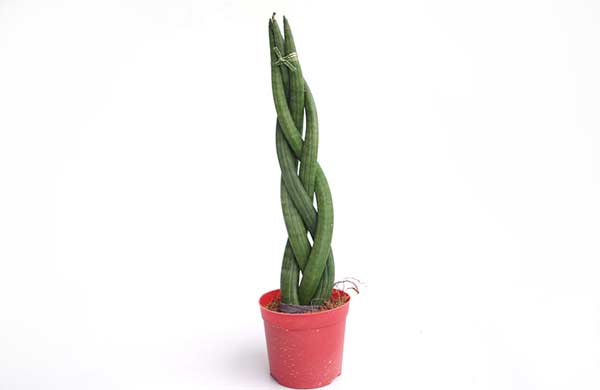
Apart from vine weevils, be careful about overwatering plants so they won’t experience root rot or other fungal infections.
Be careful while handling plant as the tip of the leaves can be very sharp and cut skin if not handled with caution.
An African spear sansevieria plant growing in pots 10″ inches and larger can also become very heavy to move around.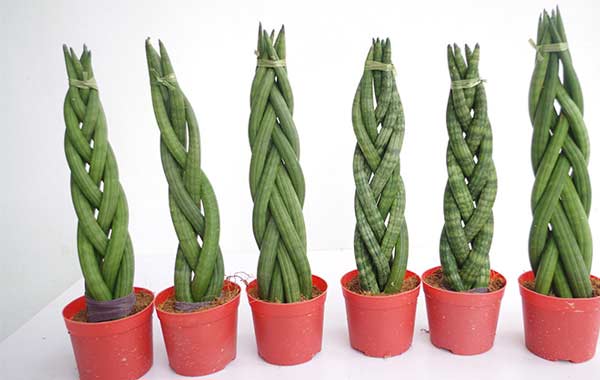
This plant can be used with equal effectiveness as an accent plant or in mass in planters or beds.
Sansevieria cylindrica (African Spear Plant) PictureSansevieria cylindrica (African Spear Plant) InfoEcological Habits of Sansevieria cylindrica (African Spear Plant)Sansevieria cylindrica (African Spear Plant) Distribution AreaHow to Grow and Care for Sansevieria cylindrica (African Spear Plant)How to Grow Sansevieria cylindrica (African Spear Plant)How to Care for Sansevieria cylindrica (African Spear Plant)Uses of Sansevieria cylindrica (African Spear Plant) Varieties of Sansevieria cylindrica (African Spear Plant)Sansevieria cylindrica (African Spear Plant) Common Pests/DiseasesSansevieria cylindrica (African Spear Plant) Design Tips
Sansevieria cylindrica (African Spear Plant) Picture

Sansevieria cylindrica (African Spear Plant) Info
| Botanical Name | Sansevieria cylindrica |
| Common Names | African spear plant, cylindrical snake plant, spear sansevieria |
| Plant Type | Succulent |
| Mature Size | 4–6 ft. tall, 1–2 ft. wide |
| Sun Exposure | Full, partial |
| Soil Type | Sandy, well-drained |
| Soil pH | Neutral |
| Bloom Time | Sporadic |
Ecological Habits of Sansevieria cylindrica (African Spear Plant)
The Sansevieria genus covers about 70 species of flowering plants, native to Africa, southern Asia, and Madagascar. One of the most popular houseplants related to Sansevieria Cylindrica is Dracaena Trifasciata, also known as the snake plant.Sansevieria Cylindrica is a succulent plant that has dark green-gray and smooth subcylindrical leaves. Each leaf can reach up to 7 feet (2.1 meters) in height and 1.2 inches (3 cm) in diameter.
It is considered to be a slow-growing succulent, forming a few rosettes from underground rhizomes with at least 3 leaves each.
This species has a unique place among the other Sansevieria plants that have strap-shaped leaves. It is said that the subcylindrical characteristic feature specific to its leaves is caused by a failure in expressing genes.
These plants got the “spear” name due to the tips of their leaves that are protected by a tough and sharp point. Be careful not to break the spear because it may end the growth for it.
A mature, healthy plant will bloom sporadically, producing an up to 3 feet (90 cm) spike-like of cream-white flowers. While these are not showy and impressive, their fragrance is very pleasing.

Sansevieria cylindrica (African Spear Plant) Distribution Area
Sansevieria cylindrica is a succulent plant native to Angola. It is an evergreen perennial plant forming dense stands, spreading by creeping rhizome, which is sometimes above ground, sometimes underground. These plants in the wild frequently form diffuse colonies.How to Grow and Care for Sansevieria cylindrica (African Spear Plant)
How to Grow Sansevieria cylindrica (African Spear Plant)
- With Cuttings
You also want to keep taps with these other handy propagation tips:
Use a sterilized pair of scissors to dissect a few healthy leaves from the mother plant.
The open wounds need to heal and form a callus that protects the newly propagated cuttings from catching diseases, so it’s essential to place them out in the sun for a couple of days.
Place the base part of the cuttings in a jar full of water and wait for the baby roots to develop.
You can also propagate the cuttings using soil. Just remember to follow the tips right under the soil and transplanting section while preparing the potting mix.
If you're looking to propagate them using water, transfer the cuttings in a growing medium once the pups begin to emerge.
- With Rhizomes
How to Care for Sansevieria cylindrica (African Spear Plant)
- Light
- Soil
- Water
Sansevieria cylindrica (African Spear Plant) is happy in places with temperatures between 15°C and 23°C and as low as 10°C for short periods. Sansevieria cylindrica (African Spear Plant) will do fine in normal household humidity.
- Fertilizer
- Pruning

Uses of Sansevieria cylindrica (African Spear Plant)
The African Spear, like other Snake plants, is quite an illustrious houseplant due to its capacity to purify the air. You probably know better how harmful toxins or gases such as benzene, xylene, and formaldehyde could cause respiratory problems when inhaled. Usually, plants release carbon dioxide at night as they take in oxygen. So, placing most of them where you sleep could lead to suffocation. But that's practically not the case with the Snake plant. Instead, it adopts the Crassulacean Acid Metabolism carbon fixation during photosynthesis to convert carbon dioxide into oxygen at night.And that literary means there's a constant supply of fresh air. It's no wonder why this biological property has over the years been used to treat Sick Building Syndrome. Clean air also helps get rid of foul odor in your house. While grooming your african spear plant, you’ll need to get rid of the dry and wilted leaves. Many adept gardeners, however, don't throw them away. Instead, they use the dry leaves as a source of fiber which is used to make ropes and craft jewelry.

Varieties of Sansevieria cylindrica (African Spear Plant)
Sansevieria trifasciata ‘Twisted Sister’: The Twisted Sister has curly leaves that grow in a warped pattern and have a yellow lining on the edges. It’s more like the dwarf type among most other varieties since the leaves only range between 12” to 15’ inches tall.Sansevieria trifasciata ‘Golden Hanhii’: The Golden Hanhii is also popularly known as the Bird’s Nest. This variety is a petite succulent with light green stripes that run horizontally on the leaves which form a striking rosette pattern as they grow older.
Sansevieria trifasciata ‘Cleopatra’: This cultivar is one of the best options for indoor spaces such as your office, room, or balcony. While it’s hard to find this variety in the market, it’s one kind of an unfussy houseplant that grows at a slow pace but forms a striking rosette pattern if grown under the right conditions.
Sansevieria trifasciata ‘Black Gold’: The leaves of this popular perennial have golden-yellow stripes on the edges and grow sleekly tall to make the plant look winsome in any indoor setting.
Sansevieria trifasciata ‘Futura Robusta’: This is a distinct type of mothers-in-law's tongue with leaves that have sleek stripes with an irregular shape. It grows compactly inside a small container and makes a delightful indoor accent.

Sansevieria cylindrica (African Spear Plant) Common Pests/Diseases
Sansevieria cylindrica is susceptible to vine weevils that eat away at the edges of the leaves. This can cause the plant a lot of irreversible harm. Get rid of the adult weevil with a neem oil soil drench. However, if the weevils manage to damage the roots significantly, the plant will probably be beyond saving.Apart from vine weevils, be careful about overwatering plants so they won’t experience root rot or other fungal infections.
Be careful while handling plant as the tip of the leaves can be very sharp and cut skin if not handled with caution.
An African spear sansevieria plant growing in pots 10″ inches and larger can also become very heavy to move around.

Sansevieria cylindrica (African Spear Plant) Design Tips
Sansevieria cylindrica are a tall growing kinds very decorative in grouping, where they can be used to provide compact vertical contrast with different kinds of lower growing bushy or rosette-shaped plants. Its easy-going nature and tolerance of dry air and soil also make it a reliable office plant. The appearance of these plants is greatly enhanced by an attractive pottery container.This plant can be used with equal effectiveness as an accent plant or in mass in planters or beds.
Latest Updated
- Benefits of Bugleweed - 7 Science-backed Health Benefits
- Bugleweed Dangers & Side Effects - Is It Poisonous?
- How to Plant Evergreen Trees - What You Should Know
- When to Plant Evergreens - Grow Guide for Evergreen Trees
- 12 Wonderful Evergreen Shrubs for Your Garden
- 12 Popular Evergreen Plants with Pictures for Beginners
- When And How To Prune A Lilac Bush Like a Pro
- How to Grow & Care for Lilac Vine (Hardenbergia Violacea)
- Japanese Lilac Tree (Syringa Reticulata) Care & Propagation Guide
- Shumard Oak Pros and Cons - What to Know
Popular Articles
- Winter maintenance of Antirrhinum Majus
- How to Grow Terminalia Mantaly Tree
- How to Grow and Care for Crossostephium Chinense
- How to grow Antirrhinum Majus in spring
- Peristeria Elata (Dove Orchid) Profile: Info & Care Guide
- Underwatered Snake Plant (Sansevieria Trifasciata) - Signs And How To Fix
- How to Care for Brazilian Jasmine Plant (Mandevilla Sanderi)
- How to Grow & Care for Graptopetalum Purple Delight in Summer
- Rosa Chinensis (China Rose): Plant Growing & Care Tips
- How to Care for Baby Sun Rose (Aptenia Cordifolia)